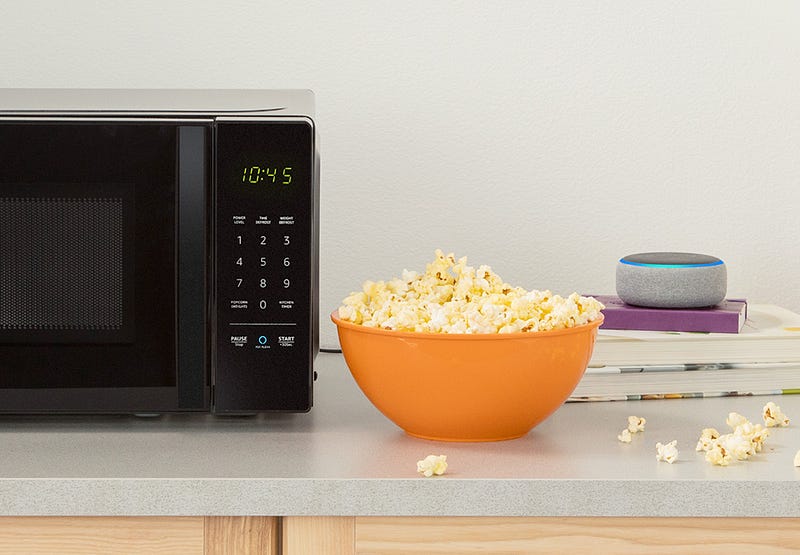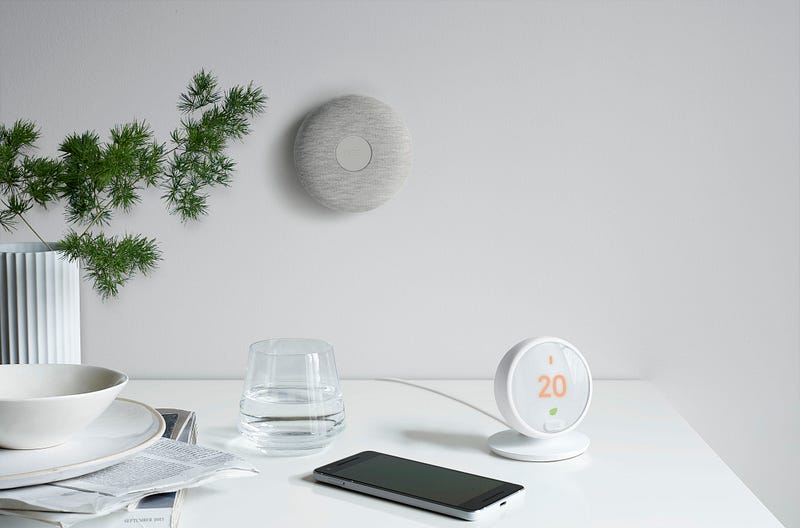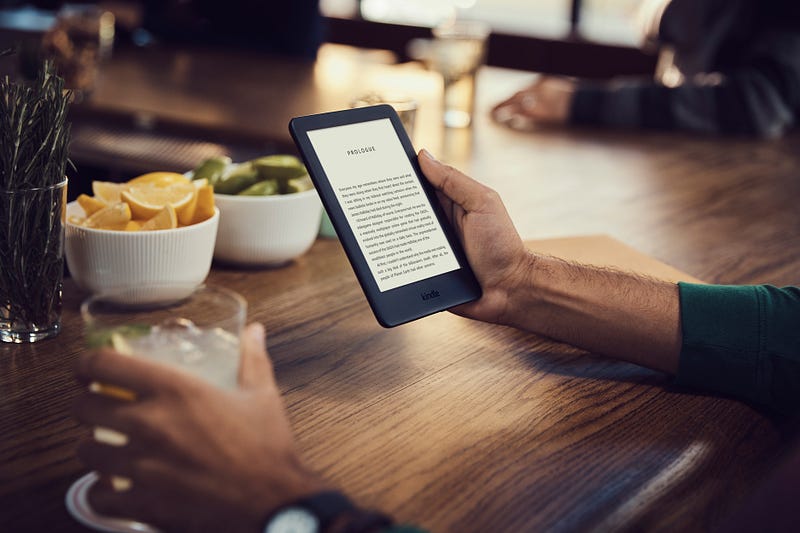What I Learned Connecting One Million Objects to the Internet
What I Learned Connecting One Million Objects to the Internet
- Last Updated: December 2, 2024
Luca Lamera
- Last Updated: December 2, 2024



Twenty years ago, PCs and laptops were the only connected objects; for a long time, there were no other devices with the capacity to send and receive information over a network. In a matter of years, everything changed and thousands of devices became connected. From smartphones to wearable technology and smart home appliances we have seen the rise of the Internet of Things.
Kevin Ashton coined the term “Internet of Things” in 1999 to describe a system where the Internet is connected to the physical world via ubiquitous sensors. Today, the number of connected objects exceeds 17 billion and is expected to grow to 35 billion by 2025.
I had the opportunity to work with many brands discovering the potential of IoT in several fields such as home automation, automotive, health and fitness. When doing retrospective meetings I always try to keep a note of lessons learned and insights about user experience, operations, big data, marketing, and business.
Redefine Everything You Know
When objects like cars, ovens, washers and audio speakers become connected they acquire some “super-powers”, where they can sense the world and communicate with each other. This power has changed the way people interact with them and has started a complete rethinking of business logic; logic that led us to one of my favorite definitions of IoT by John Rossman author of The Amazon Way on IoT:
“IoT is the digital awareness in the physical world”
From the very first project, I discovered “awareness” was a critical factor. Awareness implies a complete rethinking of product development, tools and procedures; designers and developers need to transition fast from theory to practice because IoT introduced new rules and is constantly pushing them to explore new boundaries of interaction forcing them to continuously work outside their comfort zone.

UX for IoT
Human-computer interaction in the IoT world is much more than designing an interface. A lot of interactions between users and connected devices aren’t made using screens but instead with gestures, voice, sensors and sometimes without any action at all. A smart thermostat can recognize the presence of somebody inside a room and learn a user's habits, and, without any user action, the system can adapt and set the correct temperature.

This is a common scenario in IoT where data collected by sensors and processed by algorithms allow a status change. Designing a system that can adjust without user control is a big goal. Moving from complex interfaces to no interface reduces every pain-point, as was excellently stated in Golden Krishna’s book The Best Interface Is No Interface:
“After all, as Edward Tufte once said, “Overload, clutter, and confusion are not attributes of information, they are failures of design.”
Designing an interface is the easy part of these kinds of projects. Challenges are much more likely to be related to other factors like context, mental-models, inter-usability and coherence.
Context
When an object is connected to a network, it's possible to control it from a distance, without a physical presence. In a different context, changing the context means a different scenario and a lack of feedback. The IoT projects in the automotive industry had a big impact. Connected cars generate an impressive amount of data, and they're now more like moving data-centers than vehicles. If a warning light starts on your car’s dashboard there is some kind of problem with the car. Many of these problems can be solved without a mechanic’s intervention and, by interacting with the car control unit, a mechanic can reach your car remotely. However, in a different context, he needs to know all the car’s information to understand the car’s real status and requires immediate feedback about his actions. When users need to interact with an object in a different context, they need the right tools to know the entire system status.
Mental Models
A connected device isn’t a stand-alone product but rather a small element in a larger complex system. Users need a clear understanding of the entire structure, and they need a simple mental model of the system in order to understand how it works. Users can manage actions from multiple touch-points, so it’s vital that they’re aware of the correlation between them. In a network where a car communicates with a home weather system, it’s easy to create actions between the systems to switch on the thermostat when the car is within a 20-mile range. However, it’s hard to let users know how this happens, as they need a complete awareness about this system. Fitting the correct mental model means letting users have system control. Otherwise, results will not fit users expectations, and users will not understand why some actions are happening, increasing their frustration.
Inter-Usability
Inter-usability refers to the ability to control the same device from multiple touch-points and by multiple users. Each person in a family of four can control the same connected light bulb from their smartphones. Family members could be in different locations, but they have to know if the light is on or off in real time. Inter-usability is possible only with complete awareness of the system. Unfortunately, in IoT systems, sometimes there's a critical aspect that makes real-time updates difficult: latency time. People are used to performing human-computer interactions in real time; smartphones and tablets respond immediately to user actions. But, in a system with latency, results are delayed. Designing interaction in a system with latency and inter-usability requires extensive management of feedback about user actions and system updates.
Coherence
A common error in IoT projects is a lack of coherence between devices. Think about a dishwasher that can be controlled by a companion app. Users can start actions from the physical dashboard and get feedback from their smartphone. Users move seamlessly between devices, so they expect information to be coherent with the same label, the same UI and the same data. This isn't easy to achieve in a complex project with multiple input devices, especially if there are multiple providers in the same network. The only way to ensure a good cross-platform experience is the complete knowledge of the user journey, and to understand every move between devices in order to provide coherence among all touch-points.
The Internet of Things has changed the way people interact with products and has started a complete rethinking of business logic. Companies need to embrace change and rethink products and processes to thrive.
Skills
Designers who work in the IoT field need two core skills: thinking and doing. With “thinking” I refer to the capability of looking at a problem and creating a solution, gaining insights, discovering new possibilities and finding meaning inside a chaotic context.
“Doing” is the ability to get things done, moving from ideas to concrete solutions. Creating and managing a team is the hard part as managers need to orchestrate assets, information and data between designers, developers, stakeholders and clients in a fast-changing environment. The hard part is maintaining the experience while the project evolves; it’s easy to find a short cut and adapt to the easy solution. Hard work means never taking the easy way but evolving the experience utilizing user feedback.
Data
Data results are core components in IoT projects. It’s really easy to get data from connected devices, but it’s hard to manage and extract useful information. The challenge is to move from row information to high valued insights. When we think about data we are used to thinking about quantitative data and statistics. In IoT projects, there's not only data from sensors but also all types of qualitative data that you can extract from user research. Motivation and perception never come from sensors. It’s necessary to understand what motivates users to get your product. User testing and interviews in the early stage of IoT projects in a fast iterative cycle could generate an impressive amount of insight. Design teams need to merge and understand all this data in order to make decisions and validate a hypothesis.

Think about the Amazon Kindle: the service can already know your reading speed, and, if you stopped to read a chapter, it could register your reactions and emotions by adding some sensors. In a scary future where algorithms can know you better than you know yourself, as reported by Yuval Noah Harari in his book Homo Deus this knowledge could be a new religion calleddataisms.
Marketing
Since the early stages of IoT, marketing departments didn’t understand how to sell and promote connected objects. They're focused on the killer app or the sexiest feature, and they run advertising that interrupts users and tries to sell something that's much more than reality. Marketing people are adept at overpromising. IoT projects are often in the early stages, and results are still limited while advertisers are talking about the big outcomes. Some fitness trackers promise to prevent disease, when, in reality, they only count steps and sleep hours and have very little medical purpose. The relationship between an object and a user is a relationship between a customer and a brand. Marketing people need to fully understand this relationship instead of overpromising to create loyalty.
The business of belonging, a study by IBM iX, showed top Brand Belonging performers grew revenue over six years at three times the rate of lower performing brands. IoT helps brands create a sense of belonging; brands can monitor customer interactions and improve day by day activities, as they anticipate user needs and be innovative. Connected objects are a bridge between customers and brands; the stronger the connection, the higher customer satisfaction will be.
Business
Moving from standard objects to connected objects means not only a new way of interacting but also new business models. Behind every object, there's a service, and this means a complete rethinking of business processes, tools and internal operations. Knowing the exact amount of time people use a product lets companies create new models, such as a subscription model or an "as-a-Service" model. Industrial IoT (IIoT) projects create a big process of optimization and cost reduction, According to General Electric, investments in IIoT will reach $60 trillion in the next 15 years.

Companies like Rolls-Royce rent jet engines instead of selling them and use predictive maintenance to prevent deterioration. The data business is a big opportunity. For example, think about a connected car with a smog detector. This data can be useful to third parties, as car manufacturers can sell data to municipalities to monitor air quality. Fitness products are another example, as they can sell data to pharmaceutical companies in order to provide better products based on real data.
Conclusion
The Internet of Things has had a big impact on customer experiences, marketing and business but it remains in the early stages of its revolution. According to a recent McKinsey study, leaders in the IoT market are companies that are able to create multiple case studies. They don’t search for the killer app, but instead, they implement solutions in order to understand how to move to the next level.
We are at the edge of a big shift; companies will need to embrace change and rethink every process to survive.
The connected world has just started.
The Most Comprehensive IoT Newsletter for Enterprises
Showcasing the highest-quality content, resources, news, and insights from the world of the Internet of Things. Subscribe to remain informed and up-to-date.
New Podcast Episode

What is Software-Defined Connectivity?
Related Articles


